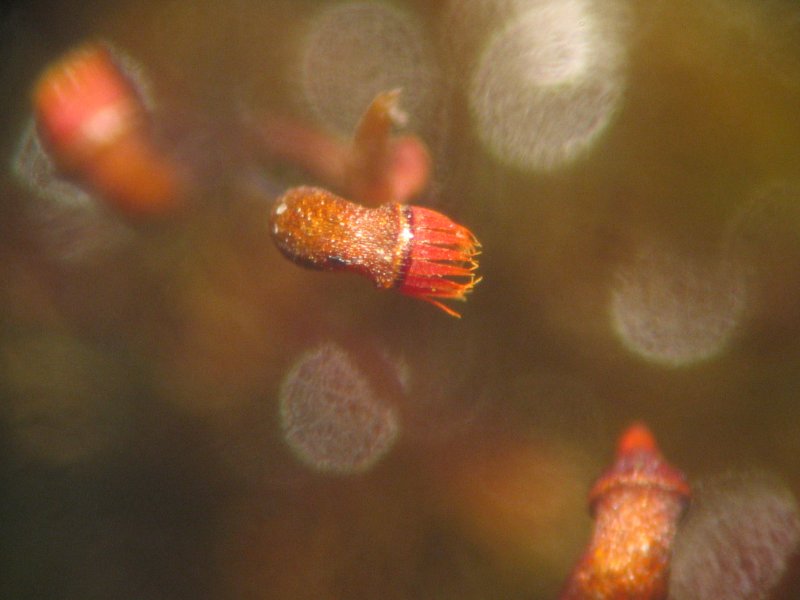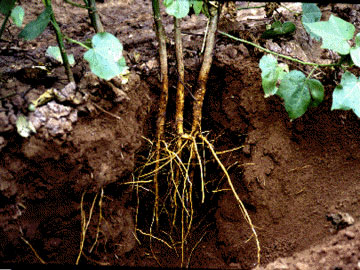|
Cephalotus
''Cephalotus'' ( or ; Greek: ''κεφαλή'' "head", and ''οὔς''/''ὠτός'' "ear", to describe the head of the anthers) is a genus which contains one species, ''Cephalotus follicularis'' the Albany pitcher plant, a small carnivorous plant, carnivorous pitcher plant. The pit-fall traps of the modified leaves have inspired the common names for this plant, which also include Western Australian pitcher plant, Australian pitcher plant, or fly-catcher plant. It is an evergreen herb that is endemic to peaty swamps in the southwestern corner of Western Australia. As with the unrelated ''Nepenthes'', it catches its victims with Carnivorous plant#Pitfall traps, pitfall traps. Description ''Cephalotus follicularis'' is a small, low growing, herbaceous species. Evergreen leaves appear from underground rhizomes, are simple with an entire leaf blade, and lie close to the ground. The insectivorous leaves are small and have the appearance of moccasin (footwear), moccasins, forming th ... [...More Info...] [...Related Items...] OR: [Wikipedia] [Google] [Baidu] |
Carnivorous Plant
Carnivorous plants are plants that derive some or most of their nutrients from trapping and consuming animals or protozoans, typically insects and other arthropods, and occasionally small mammals and birds. They have adapted to grow in waterlogged sunny places where the soil is thin or poor in nutrients, especially nitrogen, such as acidic bogs. They can be found on all continents except Antarctica, as well as many Pacific islands. In 1875, Charles Darwin published '' Insectivorous Plants'', the first treatise to recognize the significance of carnivory in plants, describing years of painstaking research. True carnivory is believed to have evolved independently at least 12 times in five different orders of flowering plants, and is represented by more than a dozen genera. This classification includes at least 583 species that attract, trap, and kill prey, absorbing the resulting available nutrients. Venus flytraps (''Dionaea muscipula''), pitcher plants, and bladderworts ('' ... [...More Info...] [...Related Items...] OR: [Wikipedia] [Google] [Baidu] |
Pitcher Plant
Pitcher plants are carnivorous plants known as pitfall traps—a prey-trapping mechanism featuring a deep cavity filled with digestive liquid. The traps of pitcher plant are considered to be "true" pitcher plants and are formed by specialized leaves. The plants attract and drown the prey with nectar. Types The term "pitcher plant" generally refers to members of the Nepenthaceae and Sarraceniaceae families, but similar pitfall traps are employed by the monotypic Cephalotaceae and some members of the Bromeliaceae. The families Nepenthaceae and Sarraceniaceae are the most species-rich families of pitcher plants. Nepenthaceae The Nepenthaceae contains a single genus, '' Nepenthes'', containing over 100 species and numerous hybrids and cultivars. In this genus of Old World pitcher plants, the pitchers are borne at the end of tendrils that extend from the midrib of an otherwise unexceptional leaf. Old World pitcher plants are typically characterized as having reduced and ... [...More Info...] [...Related Items...] OR: [Wikipedia] [Google] [Baidu] |
Jacques Labillardière
Jacques-Julien Houtou de Labillardière (28 October 1755 – 8 January 1834) was a French biologist noted for his descriptions of the flora of Australia. Labillardière was a member of a voyage in search of the Jean-François de Galaup, comte de Lapérouse, La Pérouse expedition. He published a popular account of his journey and produced the first Flora (publication), Flora on the region. Early life Jacques Labillardière was born in Alençon, Normandy, France, on 28 October 1755. The ninth of 14 children of a lace merchant, he was born into a devoutly Roman Catholic family of modest means.Duyker (2003) p. 8. The surname ''Labillardière'' originated with Labillardière's grandfather, Jacques Houtou, who, in an affectation of nobility, appended the name of the family's estate, ''La Billardière'', after his surname. Labillardière was thus baptised under the surname ''Houtou de Labillardière'', but he later dropped the patronymic, retaining only ''Labillardière'' in both h ... [...More Info...] [...Related Items...] OR: [Wikipedia] [Google] [Baidu] |
Peristome
Peristome (from the Greek language, Greek ''peri'', meaning 'around' or 'about', and ''stoma'', 'mouth') is an anatomical feature that surrounds an opening to an organ or structure. Some plants, fungi, and shelled gastropods have peristomes. In mosses In mosses, the peristome is a specialized structure in the sporangium that allows for gradual spore discharge, instead of releasing them all at once. Most mosses produce a capsule with a lid (the operculum (botany), operculum) which falls off when the spores inside are mature and thus ready to be dispersed. The opening thus revealed is called the ''stoma'' (meaning "mouth") and is surrounded by one or two peristomes. Each peristome is a ring of triangular "teeth" formed from the remnants of dead cells with thickened cell walls. There are usually 16 such teeth in a single peristome, separate from each other and able to both fold in to cover the stoma as well as fold back to open the stoma. This articulation of the teeth is term ... [...More Info...] [...Related Items...] OR: [Wikipedia] [Google] [Baidu] |
Barthélemy Charles Joseph Dumortier
Barthélemy Charles Joseph Dumortier (; 3 April 1797 – 9 July 1878) was a Belgians, Belgian who conducted a parallel career of botanist and Member of Parliament and is the first discoverer of biological cell division. Over the course of his life, Dumortier named over 688 different taxa, many of which are still in use today. A statue depicting him can be found in Tournai, Belgium, the city where he spent much of his life. The statue was constructed in 1883, by sculptor Charles Fraikin. The statue was damaged by the germans during World War I, but was repaired. Dumortier is depicted in bourgeois clothes, with his right arm folded over his chest and his left arm leaning on political documents supported by a lion. Biography Barthélemy Dumortier was a son of the merchant and city councillor Barthélemy-François Dumortier and of Mariue-Jeanne Willaumez. He married Philippine Ruteau and they had a son, Barthélemy-Noël Dumortier (1830-1915) and seven other children. Barthélemy-Ch ... [...More Info...] [...Related Items...] OR: [Wikipedia] [Google] [Baidu] |
Taproot
A taproot is a large, central, and dominant root from which other roots sprout laterally. Typically a taproot is somewhat straight and very thick, is tapering in shape, and grows directly downward. In some plants, such as the carrot, the taproot is a storage organ so well developed that it has been cultivated as a vegetable. The taproot system contrasts with the adventitious- or fibrous-root system of plants with many branched roots, but many plants that grow a taproot during germination go on to develop branching root structures, although some that rely on the main root for storage may retain the dominant taproot for centuries—for example, ''Welwitschia''. Description Dicots, one of the two divisions of flowering plants (angiosperms), start with a taproot, which is one main root forming from the enlarging radicle of the seed. The tap root can be persistent throughout the life of the plant but is most often replaced later in the plant's development by a fibrous root system. ... [...More Info...] [...Related Items...] OR: [Wikipedia] [Google] [Baidu] |
Stolon
In biology, a stolon ( from Latin ''wikt:stolo, stolō'', genitive ''stolōnis'' – "branch"), also known as a runner, is a horizontal connection between parts of an organism. It may be part of the organism, or of its skeleton. Typically, animal stolons are exoskeletons (external skeletons). In botany In botany, stolons are plant stems which grow at the soil surface or just below ground that form adventitious roots at the Node (botany), nodes, and new plants from the buds. Stolons are often called runners. Rhizomes, in contrast, are root-like stems that may either grow horizontally at the soil surface or in other orientations underground. Thus, not all horizontal stems are called stolons. Plants with stolons are called stoloniferous. A stolon is a plant propagation strategy and the complex of individuals formed by a mother plant and all its Cloning, clones produced from stolons form a single genetic individual, a genet (biology), genet. Morphology Stolons may have long or shor ... [...More Info...] [...Related Items...] OR: [Wikipedia] [Google] [Baidu] |
Tussock Grass
Tussock grasses or bunch grasses are a group of grass species in the family Poaceae. They usually grow as singular plants in clumps, tufts, hummocks, or bunches, rather than forming a sod or lawn, in meadows, grasslands, and prairies. As perennial plants, most species live more than one season. Tussock grasses are often found as forage in pastures and ornamental grasses in gardens. Many species have long roots that may reach or more into the soil, which can aid slope stabilization, erosion control, and soil porosity for precipitation absorption. Also, their roots can reach moisture more deeply than other grasses and annual plants during seasonal or climatic droughts. The plants provide habitat and food for insects (including Lepidoptera), birds, small animals and larger herbivores, and support beneficial soil mycorrhiza. The leaves supply material, such as for basket weaving, for indigenous peoples and contemporary artists. Tussock and bunch grasses occur in almost any habit ... [...More Info...] [...Related Items...] OR: [Wikipedia] [Google] [Baidu] |
Root
In vascular plants, the roots are the plant organ, organs of a plant that are modified to provide anchorage for the plant and take in water and nutrients into the plant body, which allows plants to grow taller and faster. They are most often below the surface of the soil, but roots can also be aerial root, aerial or aerating, that is, growing up above the ground or especially above water. Function The major functions of roots are absorption of water, plant nutrition and anchoring of the plant body to the ground. Types of Roots (major rooting system) Plants exhibit two main root system types: ''taproot'' and ''fibrous'', with variations like adventitious, aerial, and buttress roots, each serving specific functions. Taproot System Characterized by a single, main root growing vertically downward, with smaller lateral roots branching off. Examples. Dandelions, carrots, and many dicot plants. Fibrous RootSystem Consists of a network of thin, branching roots that spread out from ... [...More Info...] [...Related Items...] OR: [Wikipedia] [Google] [Baidu] |
Klaus Kubitzki
Klaus Kubitzki (3 May 1933 – 5 December 2022) was a German botanist. He was Emeritus professor in the University of Hamburg, at the Herbarium Hamburgense. He is known for his work on the systematics and biogeography of the angiosperms, particularly those of the Neotropics, and also the floristic record of the Tertiary era. His plant systematic work is referred to as the Kubitzki system. He was a member of the American Society of Plant Taxonomists. Career Kubitzki was born in Niesky, Germany, and studied biology and geology at the universities of Innsbruck, Göttingen, and Kiel. His doctoral work at Kiel was in Quaternary studies (1960). He then became an associate professor at the Universidad Austral de Chile in Valdivia, southern Chile (1961–1963). He pursued further studies at the University of Münster (1968), from where he proceeded to a position as lecturer at the University of Munich till 1973, and then as professor of systematic botany at the University of Hambu ... [...More Info...] [...Related Items...] OR: [Wikipedia] [Google] [Baidu] |



